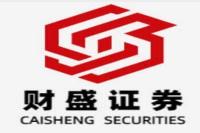保险公司养老社区:从边缘到中心,重塑养老产业新格局
元描述: 深入探讨保险公司积极参与养老社区建设,分析其商业模式、发展现状、面临挑战及未来趋势,揭示其对中国养老产业的重大影响,并包含对泰康保险、大家保险等龙头企业的案例研究。关键词:保险公司,养老社区,养老产业,老龄化,城市更新,商业模式,投资回报,泰康保险,大家保险
Wow! Imagine a future where aging gracefully isn't just a wish, but a reality, seamlessly integrated into the fabric of our cities. That's the vision driving insurance companies' massive investment in senior living communities – a game-changing move that's reshaping the landscape of China's rapidly aging population. This isn't just about bricks and mortar; it's a complex interplay of financial strategies, social responsibility, urban renewal, and a profound shift in how we perceive aging. This article delves into the heart of this transformative movement, examining the successes, challenges, and the untold potential of insurance-backed senior living communities. We'll explore the different business models, the financial realities, and the profound social impact these projects are having. Buckle up, because this is a deep dive into a sector poised for explosive growth. Get ready to uncover the secrets behind the success stories, the hurdles overcome, and the bold vision shaping the future of senior care in China. We'll be looking at specific company examples, analyzing data, and providing expert insights to give you a truly comprehensive understanding of this fascinating and vital industry. This isn't just about numbers; it's about the human element – the lives touched, the families supported, and the communities revitalized. So, let's get started and unravel the fascinating story behind insurance companies' pivotal role in revolutionizing senior living.
保险公司涉足养老社区:一个迅速发展的产业
The silver tsunami is upon us. China's population is aging at an unprecedented rate, creating a massive demand for high-quality senior living solutions. Insurance companies, with their deep pockets and long-term investment horizons, have stepped up to the plate, becoming major players in this burgeoning industry. But it hasn't been a smooth ride. Early on, the reception from local governments was lukewarm at best. Many viewed senior living as a niche market, lacking the "glamour" of other projects. Fast forward to today, and the narrative has completely flipped. Now, cities are actively courting insurance companies to develop these communities, recognizing their dual role in addressing both the aging population and urban renewal challenges. This shift reflects a significant change in societal attitudes towards aging and a more proactive approach from local governments.
This evolution is best exemplified by the experience of giants like Taikang Insurance. Initially met with indifference, Taikang's proposals are now welcomed with open arms. The reason? The realization that these communities aren't just places for seniors to live; they're integral pieces of urban infrastructure, revitalizing neglected areas and creating vibrant, multi-generational hubs.
The shift isn't just anecdotal; it's backed by hard data. According to the China Insurance Association's 2023 Social Responsibility Report, over 129 senior living projects (either completed or under construction) are being developed by commercial insurance companies. This number represents a significant investment in both resources and vision.
多元化的商业模式:重资产、轻资产与混合模式
Insurance companies have adopted various approaches to building and managing these communities, broadly categorizing into three models:
-
Heavy Asset Model: This involves direct land acquisition, construction, and operation by the insurance company. This approach, while capital-intensive and yielding slow returns, provides greater control and potential for long-term value creation. Taikang Insurance is a prime example of this model, having invested nearly 500 billion yuan in its extensive network of medical and senior care facilities. Their Taikang Home network, with over 14,000 residents, showcases the scale and ambition of this approach.
-
Light Asset Model: In contrast, the light asset model focuses on leasing or renovating existing properties, minimizing upfront capital expenditure. This allows for faster expansion and lower risk. Daja Insurance, with its "Daja's Home" brand, exemplifies this strategy. By focusing on urban centers and offering diverse services, including "city-center medical care," "travel and convalescent care," and "home-based care," they've created a flexible and scalable model. Their high occupancy rates in Beijing and other cities highlight the market demand.
-
Hybrid Model: Many companies, including China Taiping, China Taiping Insurance, China Life Insurance, China Ping An Insurance, and New China Life Insurance, adopt a hybrid model, combining elements of both heavy and light asset strategies. This approach allows insurance companies to leverage the advantages of both models, tailoring their approach to specific market conditions and opportunities. China Taiping, for instance, boasts a diverse portfolio of senior living communities across the country, demonstrating the versatility of this approach.
泰康保险与大家保险:两种模式的成功典范
Taikang and Daja Insurance represent two distinct yet equally successful paths within the insurance-backed senior living sector. Taikang, with its heavy asset model, has created a vast, integrated network offering comprehensive medical and senior care services, demonstrating the potential for long-term growth and sustainability. The scale of their operation is truly impressive. On the other hand, Daja Insurance's light asset model demonstrates the potential for rapid expansion and adaptability, emphasizing speed and flexibility in a rapidly changing market. Both companies' successes highlight the diverse possibilities for insurance companies within the senior care industry.
挑战与机遇:长远的眼光与可持续发展
While the growth is impressive, challenges remain. Profitability, especially in the early stages, is a hurdle. The long gestation period for returns necessitates a long-term perspective and a willingness to weather initial financial pressures. However, the long-term outlook is positive. The demand for senior living is only going to increase, making this a relatively recession-proof investment.
Furthermore, insurance companies recognize the synergistic relationship between their core business and senior living. Offering integrated healthcare services enhances customer loyalty, attracting high-net-worth individuals and boosting insurance sales. China Life, for example, highlights this synergy, emphasizing how their senior living initiatives enhance customer experience, drive sales, and drive innovation across their business. This synergistic relationship represents a key competitive advantage for insurance companies in this sector.
政府支持与政策导向:同频共振
Government support plays a crucial role. Local governments are increasingly keen to collaborate with insurance companies, seeing these projects as valuable tools for urban revitalization and addressing the challenges of an aging population. This collaboration fosters a symbiotic relationship where insurance companies contribute to urban development, while governments provide supportive policies and regulatory frameworks. This "win-win" scenario accelerates the development of senior living communities and contributes to the broader social good.
保险公司养老社区:未来展望
The integration of insurance and senior living is transforming the landscape of senior care in China. This strategic move not only addresses the immediate needs of an aging population but also enhances the long-term sustainability of the insurance industry. By adopting diverse business models and fostering strong government partnerships, insurance companies are creating a new era of senior living, characterized by innovation, sustainability, and a profound commitment to the well-being of China's elderly population. The future looks bright, and it's likely to see further innovation, consolidation, and growth in this dynamic sector.
常见问题解答 (FAQ)
Q1: Are insurance-backed senior living communities profitable?
A1: While initial profitability can be a challenge due to the long-term investment horizon, the long-term prospects are positive due to the consistently high demand for senior living services. Many companies view this as a strategic investment that benefits their core insurance business.
Q2: What are the different business models adopted by insurance companies?
A2: There are primarily three models: heavy asset (direct ownership and operation), light asset (leasing and managing existing properties), and hybrid (a combination of both). The best model depends on the specific circumstances and goals.
Q3: How does the government support the development of these communities?
A3: Government support comes in various forms, including supportive policies, regulatory frameworks, and collaboration on urban renewal projects. Local governments recognize the value of these communities in addressing the challenges of an aging population and urban revitalization.
Q4: What role do these communities play in urban renewal?
A4: Many insurance-backed projects focus on revitalizing underutilized or derelict properties in urban areas, transforming them into vibrant senior living communities that contribute to the overall improvement of the surrounding neighborhoods.
Q5: What are the benefits for insurance companies beyond direct profit?
A5: Insurance companies see benefits beyond direct profit, such as enhanced customer relationships, increased brand loyalty, improved customer retention and acquisition, and opportunities for product innovation.
Q6: What is the future outlook for insurance companies in the senior living sector?
A6: The future outlook is positive, with continued growth and innovation expected. We anticipate further consolidation within the industry and increasingly diverse and sophisticated service offerings.
结论
The involvement of insurance companies in senior living communities is not merely a business venture but a vital contribution to addressing the profound social and economic challenges posed by China's rapidly aging population. By embracing diverse business models, fostering strong government partnerships, and adopting a long-term perspective, insurance companies are not only transforming the senior care industry but also shaping a more vibrant and inclusive future for all generations. The journey is ongoing, but the impact is already undeniable.



